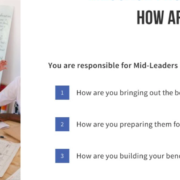What CEOs are Getting Wrong About Return-to-Office
Leaders can do better than use proximity to make judgments about value, issue veiled threats, and come up with arbitrary rules that will waste time and energy in the monitoring.
CEOs are struggling with their return to the office policies. Employees “who are least engaged,” WeWork CEO Sandeep Mathrani told The Wall Street Journal, “are very comfortable working from home.”
Cathy Merrill, the chief executive of Washingtonian Media, wrote an op-ed in the Washington Post warning employees about the risks of not returning to the office. “The hardest people to let go are the ones you know.” Her employees staged a work-stoppage.
A friend who works in the high-tech industry stated that their company will use a 75-25 rule: employees need to spend 75 percent of their time in the office and work from anywhere for the remainder.
Leaders can do better than use proximity to make judgments about value, issue veiled threats, and come up with arbitrary rules that will waste time and energy in the monitoring.
Here’s a better way.
There are plenty of jobs that are done mostly in isolation, such as research-oriented work. Other jobs, like manufacturing, need to be performed in person.
Companies also have roles in which employees perform recurring tasks: assembly-line work, IT monitoring, coordinating activities, and the like. You also have to handle non-routine requirements, including innovation, crisis management, and product development.
When you put these variables together in a quad-chart, you get a better way to organize your return-to-office requirements.
Recurring work that employees can do in isolation are prime candidates for very permissive work-from-home arrangements.
Roles that require innovative work that employees can perform in isolation should have permissive arrangements, too, but less so than the former because the free exchange of ideas improves quality and reduces the risk of science projects taking on lives of their own.
By contrast, innovative roles requiring substantial collaboration should probably be performed more at the office than elsewhere.
Recurring, on-site roles often require the highest in-office frequency.
Apply a commonsense method like this one, and you’ll boost productivity, retain your top talent, and make smart choices about office space.
P.S. How action-oriented are your company’s values? Slogans mostly create cynicism. Actionable values boost accountability for employees doing what’s right, the right way, without you having to watch.
I’m teaming up with leadership expert Jan Rutherford on June 2 at 1 pm US Central time to offer you a Values Do-in-Ar. Inc magazine recognized Jan as one of America’s Top 100 Leadership Speakers.
You will come away from this Do-in-ar with action-oriented, accountability-inspiring values that enhance your company’s performance, reputation, and well-being.
To get your invitation, please donate to your favorite charity and let me know that you’ve done so (I work on the honor system).
I’ve just donated to the Milwaukee War Memorial, which is holding a special event in honor of Memorial Day.








